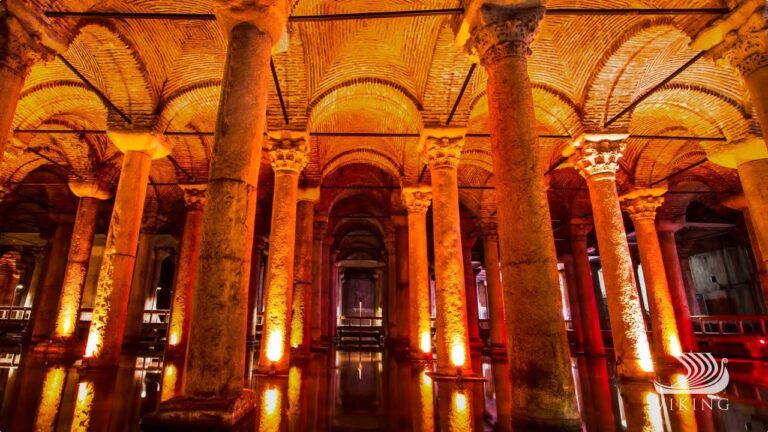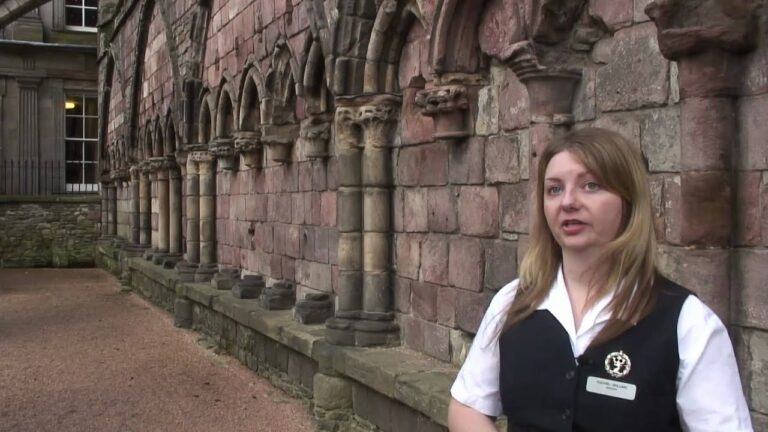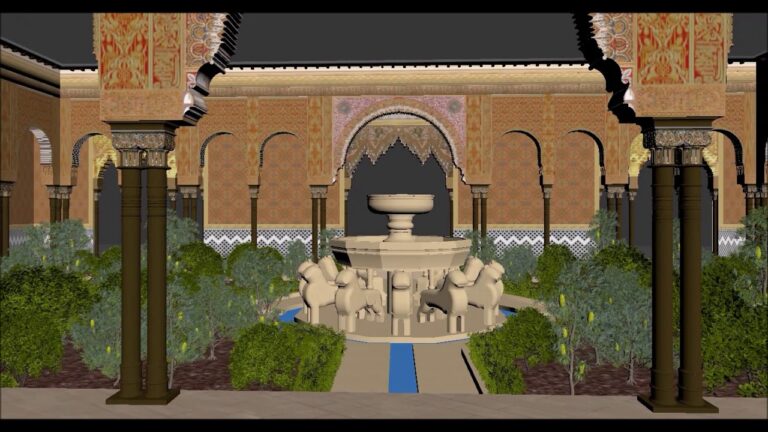Yerebatan Cistern, also known as Basilica Cistern, is an underground chamber located in Istanbul, Turkey. It was built in the 6th century during the Byzantine era and is one of the most spectacular and famous monuments in the city. The cistern is an impressive example of engineering, with a capacity of up to 80,000 cubic meters of water.
History
The Yerebatan Cistern was built in 532 CE by the Byzantine Emperor Justinian I. It was part of a large-scale water system that supplied the city of Constantinople (modern-day Istanbul) with fresh water from nearby springs. The cistern was originally named “Basilica Cistern” because it was located beneath the Stoa Basilica, an ancient marketplace. It was later renamed Yerebatan Cistern, meaning “sunken cistern” in Turkish. The cistern remained in use until the 19th century, when it fell into disuse and was forgotten until its rediscovery in the mid-19th century.
Architecture
The Yerebatan Cistern is a vast, cavernous chamber with a rectangular footprint. It is approximately 140 meters long, 70 meters wide, and 14 meters high. The walls and columns are made of brick and stone, and the ceiling is supported by 336 marble columns arranged in 12 rows of 28 columns each. The columns are decorated with various motifs, including the Egyptian lotus flower, the acanthus leaf, and the inverted bell.
Water Supply
The Yerebatan Cistern was supplied with water from the nearby Belgrade Forest via an aqueduct. The water was filtered through the soil and a series of valves and channels before entering the cistern. The water was then stored in the cistern, where it was kept cool by the thick stone walls. The cistern also featured an underground lake, which served as a buffer to prevent the water from overflowing.
Features
The Yerebatan Cistern is a spectacular site to visit. The cistern is filled with crystal-clear water and illuminated by a system of lights, creating an ethereal atmosphere. Visitors can explore the cistern by taking a boat tour, which will take them past the many columns and through the underground lake. The cistern is also home to two Medusa heads, believed to be from the Temple of Apollo in ancient Greece.
Modern Uses
Today, the Yerebatan Cistern is a popular tourist attraction. It is open to the public and is used for various events and concerts. The cistern also serves as a venue for art installations and exhibitions. In recent years, it has become a popular spot for wedding and engagement photos.
Conclusion
The Yerebatan Cistern is an impressive example of engineering and an important monument in Istanbul. It is a popular tourist attraction and a venue for various events and exhibitions. The cistern is also home to two Medusa heads, believed to be from the Temple of Apollo in ancient Greece.
- History – The Yerebatan Cistern was built in 532 CE by the Byzantine Emperor Justinian I.
- Architecture – The cistern is a vast, cavernous chamber with a rectangular footprint, and is approximately 140 meters long, 70 meters wide, and 14 meters high.
- Water Supply – The Yerebatan Cistern was supplied with water from the nearby Belgrade Forest via an aqueduct.
- Features – The cistern is filled with crystal-clear water and illuminated by a system of lights, and is also home to two Medusa heads.
- Modern Uses – Today, the Yerebatan Cistern is a popular tourist attraction and is used for various events and concerts.




